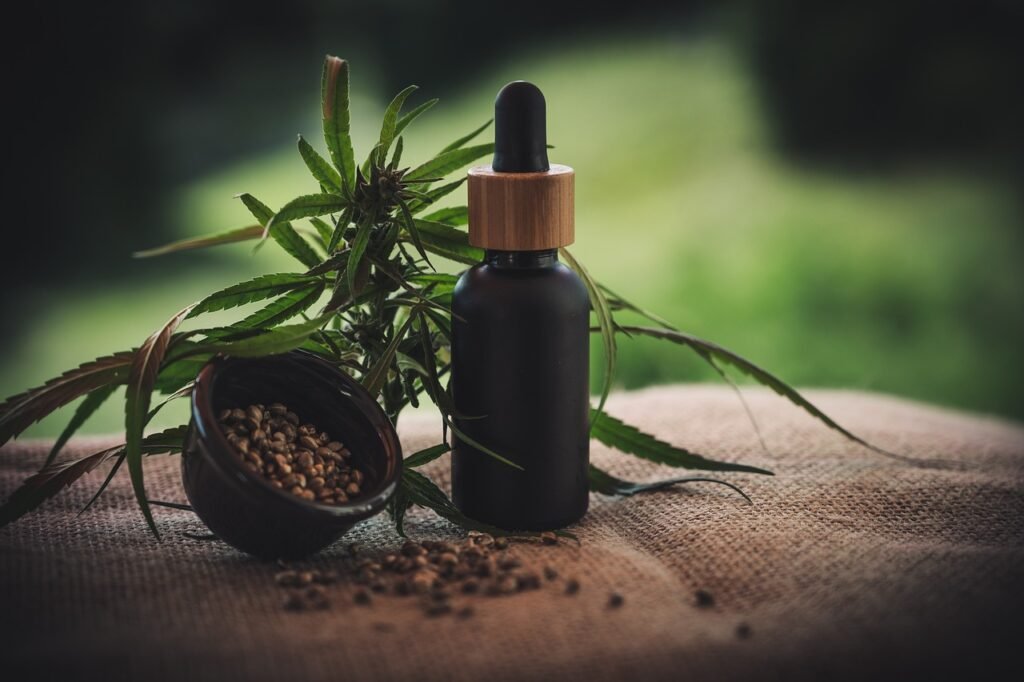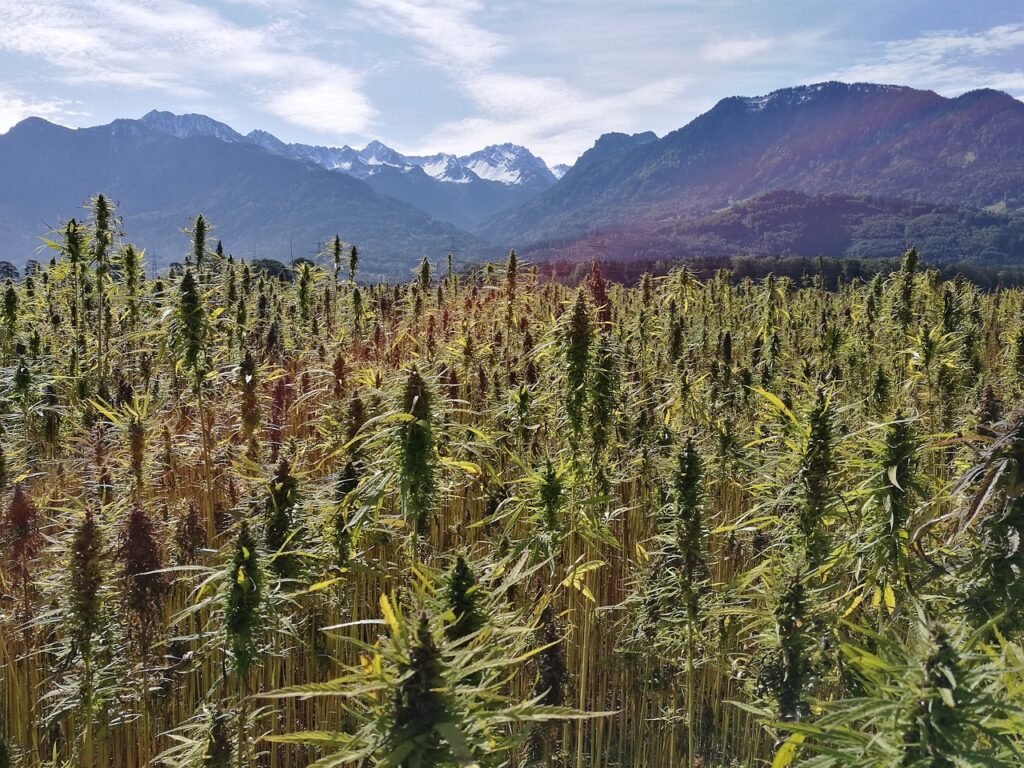A Comprehensive Manual for Germinating Cannabis Seeds

Prior to reaping plentiful yields of high-quality cannabis buds, there are crucial stages in the cultivation process that must be addressed. Among these stages, successful germination of cannabis seeds holds utmost importance as it serves as the foundation for a thriving plant ready for harvest. Enhance the prospects of your seeds by delving into our comprehensive guide to germination, ensuring they receive the optimal conditions for a promising start in life.

Contents:
- The art of germinating cannabis seeds
- What to look out for in cannabis seeds
- Germination temperature plays a crucial role
- What is an expected germination time?
- Choosing your germination method
- Giving your seeds the best possible start in life
- Germination and beyond
The Art Of Germinating Cannabis Seeds
Often underestimated, it is important to recognize that the germination phase of cannabis growth plays a pivotal role in the plant’s overall life cycle. Neglecting proper planning and execution during this stage can significantly impact the success of your next cultivation endeavor. Providing your cannabis seeds with optimal conditions and support from the start is a reliable method to foster a vigorous and thriving plant.
Cannabis seeds are delicate and in need of assistance, and there exist several methods for germinating them. Each method carries its own level of success, accompanied by specific advantages and disadvantages. It is crucial to acknowledge that even with advanced expertise and top-notch equipment, encountering a few failed seeds is a natural occurrence when dealing with living organisms. At Royal Queen Seeds, we offer a diverse range of high-quality regular and feminized cannabis seeds, clearly labeled to eliminate any unexpected surprises.
What To Look Out For In Cannabis Seeds
Irrespective of the source of your seeds, it is advisable to carefully examine them before planting. While most seeds tend to germinate successfully, low-quality seeds can yield weaker plants, a realization that often occurs during the later stages of vegetative and flowering growth.
To minimize potential disappointment, prioritize seeds with a darker hue as they have a higher likelihood of successful germination, whereas pale green or white seeds are more prone to failure. Even if darker seeds appear slightly damaged, it is still worth planting them. There is a good chance they will germinate despite minor external shell damage.
Germination Temperature Plays A Crucial Role
Before delving into the various germination methods, it is essential to familiarize yourself with a couple of key germination principles. Regardless of the method you choose, adhering to these guidelines is crucial for optimal outcomes.
Among these considerations, temperature stands out as one of the most critical factors. While seeds naturally gravitate towards moisture, they rely on temperature as a signal to initiate this process. Even the slightest temperature variation can influence their response.
- The ideal temperature is between 22° and 25°C (71–77°F)
- Your growing environment should be damp/moist, but never wet
- Relative humidity range should be between 70% and 90%
- Seeds favour fluorescent lighting (Cool White code 33)
- Minimise the amount of seed handling you do
- In hydroponic/rockwool plugs, the ideal PH value is 5.8–6.2
| -15 °C | 17 °C | 23 °C | +25 °C |
| ⚠️ DANGER ZONE | IDEAL NIGHT TEMPERATURE | IDEAL DAY TEMPERATURE | ⚠️ DANGER ZONE |
What Is An Expected Germination Time?
Three essential principles play a vital role in initiating the emergence of the initial taproot: warmth, moisture, and darkness. With the presence of moisture, a single root will begin to form, gradually evolving into the beloved cannabis plant we recognize. Under optimal conditions, seed development can commence within 12-36 hours after introducing moisture.
The specific timeframe may vary, contingent upon the quality of your germination environment (refer to the aforementioned golden rules). Even inexperienced growers can achieve seed germination, albeit potentially requiring a few weeks and posing an increased risk of producing a weaker plant.
Choosing Your Germination Method
-
Glass Of Water Approach

While it may not be the most efficient approach, germinating cannabis seeds in a glass of water remains a viable option. This method is particularly straightforward, making it suitable for novice growers. Begin by filling a glass or bowl halfway with water at a temperature of around 22°C (71°F).
After 3-5 days, the seeds will begin to crack open, revealing small white tips. Once these roots reach a length of 2-3cm, carefully transfer them from the water to pre-prepared soil pots, exercising caution.
Prepare the soil pots by creating small holes approximately 10-15mm deep for the germinated seeds. After securely placing the seeds, position a fluorescent light approximately 13-15cm (5-6 inches) away from them to promote growth. It is crucial not to overwater the seeds during this early stage. Instead, use a plant mister to keep them damp without making the soil excessively wet.
-
Wet Kitchen Towel Method
Undoubtedly one of the most popular germination methods, the kitchen towel method offers various variations. Some growers opt for cotton wool pads or absorbent paper pieces. In this guide, we will employ kitchen towels, as they are easily accessible and retain moisture effectively.
Begin by laying a moistened sheet of kitchen towel on a flat surface. Place your seeds a few centimeters apart on the towel before covering them with another piece of kitchen towel. It is crucial to ensure that both layers of towel are damp but not excessively wet. Once again, once the white root tips reach a length of 2-3mm, carefully transfer the germinated seeds to soil pots. Follow the same planting techniques provided above for guidance.
-
Planting Directly Into Soil
Opting to plant seeds directly into your chosen growing medium eliminates the need to handle them when they are most delicate. The initial root tip is covered in microscopic filaments that are easily susceptible to damage. Considering that both a cup of water and moist paper towels are prone to temperature fluctuations in their surroundings, planting in soil emerges as a safer alternative.
Begin by filling pots with high-quality soil that has been appropriately moistened. Many growers also prefer to enhance the water with a root stimulator. Create holes approximately 10-15mm deep, which will serve as the new home for your seeds. Take the seeds out of their packet and carefully place them into the pre-dug holes. Loosely cover the seeds, ensuring not to excessively compact the soil above them. Firm soil can impede root penetration, hindering plant growth. Lightly mist the area where the seeds are planted to maintain moisture in the growing medium.
If you prefer not to pre-soak your soil, you can use a spray to moisten the holes before planting each seed. By providing sufficient moisture around the seeds, you can still encourage root development.
Ensure your growing pots are situated in a humid environment that falls within the temperature range specified in our golden rules. Within 4-10 days, you should observe the emergence of young seedlings with roots starting to develop beneath the soil. At this stage, you can transfer the entire plant, along with its soil, to a larger pot, initiating regular growing routines.
-
Using Stone Wool Blocks
Ensuring the optimal temperature (ranging from 22-25°C/71-77°F) and moisture levels during germination can be challenging. Leaving seeds exposed to the open environment or relying on a windowsill is far from ideal. A more effective approach involves setting up a DIY climate-controlled cupboard. While a warming mat is excellent for maintaining a consistent temperature, it doesn’t address the moisture aspect.
To create an ideal germination environment, it is necessary to acquire a few specialized items. By utilizing stone wool blocks, you can establish a perfect sanctuary for germinating cannabis seeds. Soak the stone wool blocks in a similar manner as you would a soil medium. The wool material will retain moisture, eliminating the need for watering during the initial germination stages. Once the wool blocks are soaked, place them in a plastic tray equipped with a lid. Large cake tubs serve as an ideal choice for this purpose.
The plastic container’s dome will create a miniature tropical climate for your seeds. By placing all the components in a temperature-controlled cupboard, you can establish a self-sustaining supply of moisture. There will be no need to handle the seeds again until they are prepared for transfer to the final growing medium as young seedlings. By utilizing the stone wool block method, your seeds should germinate within one to two days.
After two or three weeks of germination, your young seedlings will be ready for their next stage. At this point, you have two options: transplanting them into soil pots or embarking on the challenge of hydroponics. You can determine the readiness for transplantation when the root system begins to emerge from the bottom of the wool blocks. As long as the roots have not completely engulfed the bottom half of the wool block, they will seek out water and nutrients in their new environment, continuing their downward growth.
-
RQS Soil Plugs
When it comes to germinating seeds, RQS Soil Plugs offer another excellent option. These plugs are designed to be user-friendly and contain a meticulously crafted formula of ingredients that promote thriving seedlings. Crafted with premium peat and coir, they strike a perfect balance between aeration and water retention. This ensures that the seeds remain adequately hydrated while minimizing the risk of fungal diseases, such as damping off.
RQS Soil Plugs are enriched with essential micronutrients crucial for the optimal growth and development of seedlings. The inclusion of active biological agents helps establish a healthy root microbiome by introducing beneficial organisms that combat pathogens and enhance nutrient absorption and organic matter decomposition. Additionally, the pH-balanced nature of these plugs facilitates easy nutrient uptake by cannabis roots, reducing the likelihood of nutrient lockout.
RQS Soil Plugs make transplanting a breeze, removing any hassles from the process. When the roots start to emerge, you can effortlessly transplant the seedlings directly into soil or hydroponic systems.
Using RQS Soil Plugs is a simple process. Place one seed of your choice into each plug. Arrange the plugs in a propagation tray and lightly mist them with water, ensuring they are moist. To maintain humidity, cover the tray with a clear plastic lid, while also maintaining the desired temperature and humidity levels as discussed earlier. It can be helpful to use a small hygrometer to monitor these crucial measurements.
-
Royal Queen Seeds Feminized Starter Kit
For beginners seeking a hassle-free approach to seed germination, the Royal Queen Seeds feminized starter kit offers a straightforward solution. This comprehensive kit provides you with all the essentials necessary to jumpstart your upcoming cannabis project.
There is, indeed, a much simpler method for seed germination. The Royal Queen Seeds Feminized Starter Kit is the ideal solution. This comprehensive kit includes the following essential components:
- 3x RQS Critical feminized seeds
- 20x Easy-Start seedling pots
- 1x Propagator Pro
- 1x pack of Bacto
- 1x perlite
- 1x fluorescent lights
- 1x instruction manual
- 4x AA batteries
- 1x Royal Queen Seeds catalogue
*You will also need a measuring cup and a stirrer (not included in the kit).
1. Carefully peel off the foil from the back of the seed packet and gently transfer the seeds into a dry container.
2. Prepare a shallow container that can comfortably fit the seed tray. Fill the container with one liter of lukewarm water (22–25°C/71–77°F). Add the packet of Bacto enzyme to the water, ensuring it fully dissolves before placing the seed tray into the container for soaking. The seed tray should only be immersed for 5–10 seconds. It is important to note that the Bacto mixture should not be discarded after soaking the seed tray.
3. Once you have taken the seed tray out of the shallow container, gently create a hole in the soil of each pot, approximately 10–15mm deep. Carefully transfer the seeds from their dry container into each hole, ensuring that only one seed is placed in each pot.
4. With the provided propagator, evenly spread a 15mm-thick layer of perlite across the bottom of the tray.
5. Insert the seed tray into the propagator, adjust the walls to fit, and securely position the lid. The lid is equipped with an on/off switch for the pre-installed lights.
6. Monitor the water level in your reservoir daily, ensuring it remains consistently balanced. Within 1–7 days, the seeds should sprout, and you will notice the emergence of visible leaves. Once the seedling reaches a height of 3cm, it is ready to be transferred to your chosen final growing medium.
If In Doubt, Think Springtime Conditions
Regardless of the method you select, it is crucial to consider the natural conditions experienced during spring. In the natural environment, cannabis seeds begin to sprout as winter transitions into spring. During this time, moisture levels are high, and temperatures naturally increase. Always evaluate whether your germination setup replicates these spring conditions by asking yourself the question, “Does my germination setup emulate the conditions of spring?” If the answer is affirmative, there is a high probability of successful germination.
Giving Your Seeds The Best Possible Start In Life
In the majority of cases, germination proceeds smoothly without any problems. Nevertheless, if you encounter any troubleshooting issues, we are here to provide assistance and guidance.
-
Lighting
The first aspect to consider is lighting. Initially, your seeds and young seedlings require fluorescent or CFL grow lights. While light is essential for their growth, excessive light intensity can harm cannabis plants during their early stages.
Position the lights approximately 15cm away from the seeds. Once your seedling develops its first true leaves (with jagged edges), you can gradually move the lights closer, as close as 5cm. If you are concerned about potential damage, place your hand between the leaves and the lights. If you cannot hold your hand in that position for ten seconds without discomfort, move the lights 2cm away. Repeat this process until you achieve a comfortable temperature.
As young seedlings grow rapidly, continuous adjustments of the lights are necessary for optimal results. After two weeks under fluorescent lights, you can switch to high-powered HPS or MH-style grow lights.
-
Upside-down Seeds
There’s no need to panic. In general, roots naturally grow downward, so there’s no need to try and reposition the seed yourself. It’s best not to disturb the seed during this critical phase, as it can cause more harm than good. In most cases, what may appear as a root protruding from the top of the seed is actually the stem of a cannabis plant.
If you’re uncertain, it’s always advisable to wait a few days for the first leaves (cotyledons) to emerge. As long as the seed’s requirements have been met, the seedling should resolve itself. The key is to stay calm, adhere to the golden rules, and soon enough, your young seedling will be ready for transfer to a larger pot.
Germination And Beyond
When Do You Start Feeding?
The requirement for nutrients will vary based on the growing medium used, but in most cases, you won’t need to provide any nutrients for the first 2-3 weeks. The soil or coco medium will already contain an ample supply of nutrients, and even in coco or hydroponic systems, nutrient additions are typically necessary after approximately a week. If you choose coco or hydroponics, begin with nutrients at 0.25x the regular strength. As the first set of leaves emerges, gradually increase the nutrient concentration by 0.25x with each subsequent set of leaves. For beginners, using a soil medium is highly recommended as it allows for a better understanding of cannabis cultivation intricacies and is more forgiving of mistakes.
To determine if your plant requires additional nutrients, examine the leaves. If the serrated leaves start to turn pale green, it indicates a depletion of nutrient reserves. If left unaddressed, the leaves will eventually turn yellow. This serves as a clear signal that your plant needs more nutrients. While yellow leaves won’t cause the plant to die, it’s a reminder to feed your young seedling.
During periods of rapid growth, nitrogen is commonly the most essential nutrient. Once the seedling receives the necessary nutrients, the leaf color will return to normal. The timeframe for this recovery varies, ranging from a few hours to a full day, depending on the duration of nutrient deficiency.
RELATED STORY
Sit Back And Relax
During the first few weeks of a seedling’s growth, it requires little intervention. As mentioned before, minor adjustments to nutrients and lighting may be necessary. However, once your seed has successfully germinated, you can relax and enjoy the process of your cannabis plant taking form.
After this initial period, you can treat your seedling as if it has entered the vegetative stage. Implement strict lighting schedules and provide full-intensity light. Throughout the germination process, remember to follow the golden rules and ensure you have created optimal “springtime conditions.” If you are confident that everything is progressing well, all that’s left to do is observe and marvel at the remarkable development of your very own cannabis plant.
Part. 2: The Vegetative Phase. As the germinated seeds emerge from the soil, they quickly and eagerly reach for the sky.
Part. 3: The Cannabis Blooming Phase.After a few more months of flourishing, our cannabis plants will be fully matured and ready for harvest. It will soon be time to retrieve our pruning shears from the cupboard.
Part. 4: The last weeks of flowering stage. After weeks of building anticipation, the highly anticipated moment of harvest is finally within our grasp.
Part. 5: Harvest Time.Gain comprehensive knowledge about every stage of the cannabis harvest and post-harvest procedures.






